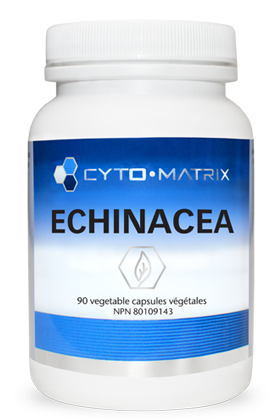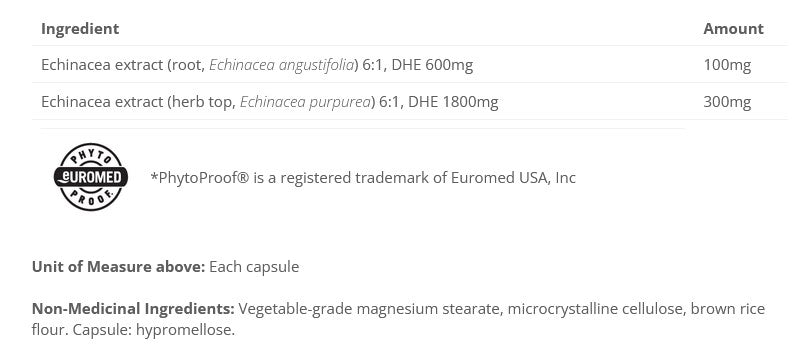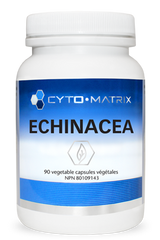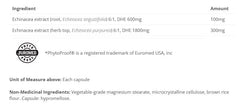



Description
x- These herbs collectively help improve the body's immune response and decrease the symptoms of upper respiratory infections
Echinacea is an herb commonly used to improve immune function and manage symptoms of upper respiratory tract infections (URTI). Echinacea is a genus of the daisy family and most commonly refers to two species: purpurea and angustifolia. Each species of echinacea offers unique health benefits, but both are beneficial for optimizing and balancing immune function.
For example, a 2007 meta-analysis examined echinacea's ability to prevent colds in more than 1,300 people. Almost all of the 14 included trials used either echinacea purpurea alone or a combination of purpurea and angustifolia. On average, these preparations were found to lead to a 58% decrease in the likelihood of developing a cold and a 1.4 day decrease in the duration of symptoms.
A randomized, double-blind, placebo-controlled trial compared Echinacea purpurea, Echinacea angustifolia, and placebo interventions for URTIs in 302 healthy adults. These people received extracts of either species or a placebo for 5 days a week for 12 weeks. At the end of the trial, 37% of the placebo group experienced an URTI, while only 32% of the angustifolia group and 29% of the purpurea group developed symptoms. Additionally, both echinacea groups increased the average number of days to first symptoms. The placebo group experienced initial symptoms after 65 days, compared to 66 days for the angustifolia group and 69 days for the purpurea group. These results suggest that both species provide immune benefits.
There are a variety of constituents that are considered active, including alkylamides, polysaccharides and phenols. Depending on the species, there are different quantities and types of each component. For example, Echinacea angustifolia contains echinacosides, an antimicrobial phenolic component not found in purpurea species. Additionally, although both species have multiple alkylamides, a greater variety of alkylamides are found in Echinacea angustifolia compared to Echinacea purpurea. The combination of the two echinacea species provides a more complete and perhaps synergistic blend of active ingredients.
That being said, Echinacea purpurea has more human clinical trials and research support. For example, it has been shown to increase natural killer cells, leukocytes, neutrophils and monocytes, while stimulating the phagocytic activity of macrophages. Additionally, Echinacea purpurea has demonstrated activity against Candida albicans and Saccharomyces cerevisiae, as well as viruses such as influenza and herpes. Finally, Echinacea purpurea supplementation for 4 weeks showed a decrease in both salivary IgA levels and disease duration.
Cyto-Matrix Echinacea combines the two powerful immunomodulatory species of Echinacea to effectively prevent and treat URTIs, various infections and improve the overall health of the body's immune response. Each Echinacea Matrix vegetable capsule contains 100 mg (6:1 extract; dried herbs
Equivalent [DHE] 600mg) of Echinacea angustifolia root extract and 300 mg (6:1 extract; DHE 1800mg) of Echinacea purpurea extract, standardized to 4% echinacoside and 4% phenol content, respectively. These active ingredients are confirmed using high-performance liquid chromatography (HPLC), the most accurate and reliable test available for plant extracts. Each bottle of Echinacea Matrix contains 90 vegetable capsules.
Echinacea is part of the Cyto-Matrix Herbal Matrix series, containing sustainably sourced, traceable, non-GMO herbs with powerful therapeutic properties. Each herb is extracted and tested to ensure standardization of active ingredients, ultimately leading to effective, predictable and reliable products. The Cyto-Matrix Herbal Matrix series of plant extracts benefits both the health of individuals, but also the health of our planet and future generations.
Posologie
xInfos nutritionnelles
x- Choosing a selection results in a full page refresh.

